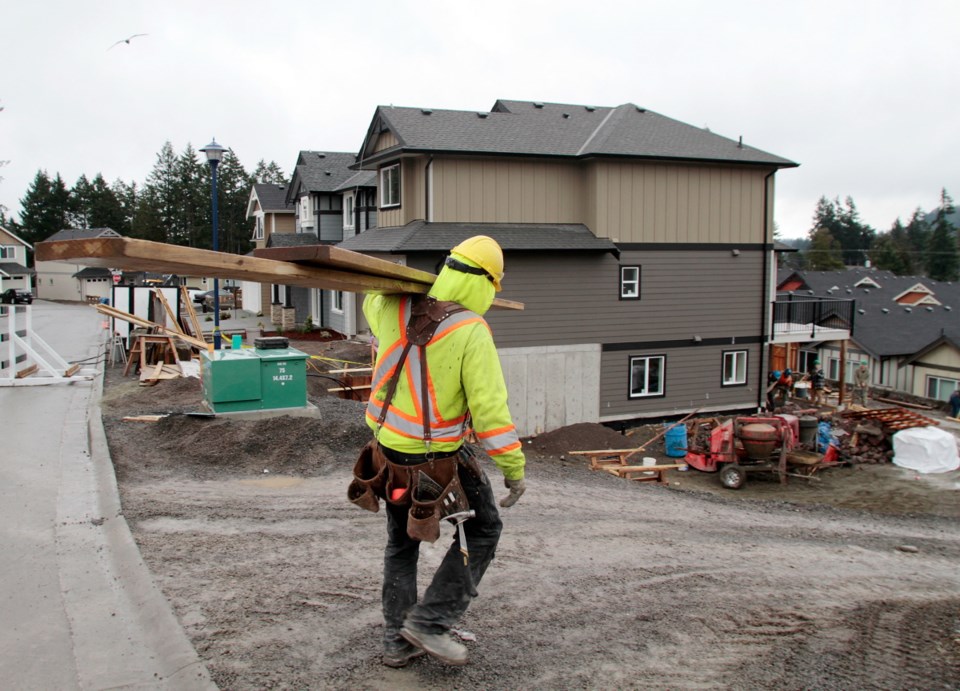The number of single-family homes built in 2012 was the fewest in more than a decade in Greater Victoria, according to data released Wednesday by the Canada Mortgage and Housing Corp.
The region recorded 1,700 total housing starts last year, but only 552 of those were single-family homes. That was a drop of 57 from last year’s 609 and the lowest number recorded since builders put up 631 single-family homes in 2001.
“We are scraping along the bottom here, that’s the bottom line,” said Casey Edge, executive director of the Victoria branch of the Canadian Homebuilders Association.
“It’s not down to any one thing,” said Edge. “It’s a confluence of factors.”
Edge said some of it is down to consumer confidence, which has been shaken by both global and local economic uncertainty. Also cited in the decline are increasing personal debt loads in Canada, tougher mortgage rules, uncertainty created by the introduction and repealing of the HST and a looming provincial election.
But there are also factors that should translate into an improved home-building market, such as historically low interest rates, relatively strong unemployment rates and increased in-migration.
“We have conflicting data. We should be seeing stronger numbers,” Edge said. He noted that multi-family developments like condominiums are basically sustaining the homebuilding industry in the capital region right now.
Canada Mortgage and Housing Corp. reported 39 multi-family units started in December for a 12-month total of 1,148. That figure, an increase of 115 from the year previous, pushed the total number of starts last year, combined with single-family homes, to 1,700. That’s up from 1,642 in 2011.
“Obviously we are below the historical average when you look at 10 or 20 years ago, but it is improving,” said Etienne Pinel, senior market analyst for the federal agency. “And we expect the number of starts will slightly increase this next year as well.”
At this point, Canada Mortgage and Housing Corp. expects a modest increase to about 1,850 starts in total in 2013.
“There’s still some uncertainty when looking at global economic conditions, but on the domestic side there are two major factors that will push starts and sales up — employment as well as in-migration,” Pinel said. “We’re really looking at a stable market in terms of both resale and new construction.”
But that stability could take time to manifest itself in 2013. With the transition back to the PST from the harmonized sales tax in April and a provincial election in May, Edge expects uncertainty to linger.
“I expect greater consumer confidence to return when the HST is gone and when we have stability with respect to the politics, regardless of who wins,” he said. Factor in continued low interest rates and the low cost of materials and labour and it should mean more homebuilding activity.
“If people are going to build a new home, there will have to be a recognition at some point of [low interest rates and material costs]. They will have to ask ‘;how low can they go’ and they may have to make some decisions,” said Edge.
Edge would like to see a return to a more balanced and healthy homebuilding market where single-family construction is close to 50-50 with multi-family construction.
“Right now multi-family starts are twice single-family housing,” he said.



